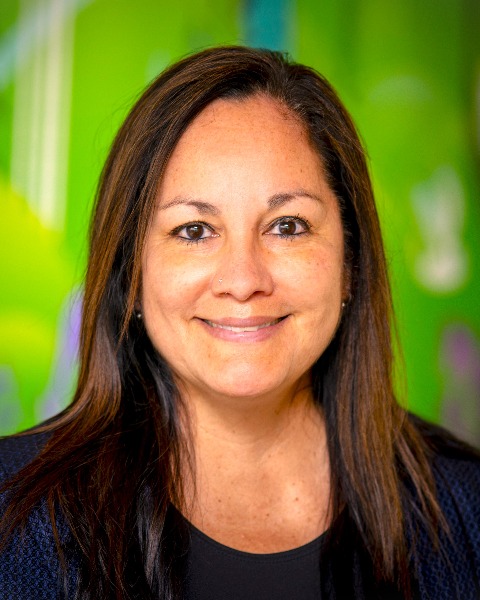Pulmonology
Session: Pulmonology
105 - The Guardians of the Lung: Defining the Future of Pediatric Pulmonologists
Friday, April 25, 2025
5:30pm - 7:45pm HST
Publication Number: 105.6721
Theresa A. Laguna, University of Washington School of Medicine, SEATTLE, WA, United States; Paul E. Moore, Vanderbilt University School of Medicine, Btentwood, TN, United States; Deepa Rastogi, Albert Einstein College of Medicine, Bronx, NY, United States; Alfin Vicencio, Icahn School of Medicine at Mount Sinai, New York, NY, United States; Andrew S. Gelfand, University of Texas Southwestern Medical Center, Dallas, TX, United States; Patricia Dubin, University of Tennessee Health Science Center College of Medicine, Memphis, TN, United States; Geovanny F. Perez, Jacobs School of Medicine and Biomedical Sciences at the University at Buffalo, Buffalo, NY, United States; Cori Daines, University of Arizona, Tucson, AZ, United States; Thomas Lahiri, The University of Vermont Children's Hospital, Burlington, VT, United States; Mai ElMallah, Duke University School of Medicine, Durham, NC, United States; Catherine Kier, Renaissance School of Medicine at Stony Brook University, Stony Brook, NY, United States; Kristie Ross, UH Rainbow Babies & Children's Hospital, Cleveland, OH, United States; Ignacio E. Tapia, University of Miami Leonard M. Miller School of Medicine, Miami, FL, United States; Stephanie Lovinsky-Desir, Columbia University Vagelos College of Physicians and Surgeons, New York, NY, United States; Maria T. Santiago, CCMC, New Hyde Park, NY, United States; Alexandra CE. Quinn, Seattle Children’s Hospital, Seattle, WA, United States; Anna Faino, Seattle Children's Research Institute, Seattle, WA, United States; Stacey Peterson-Carmichael, Wake Forest School of Medicine of Wake Forest Baptist Medical Center, Winston Salem, NC, United States

Theresa A. Laguna, MD MSCS ATSF (she/her/hers)
Professor of Pediatrics
University of Washington School of Medicine
SEATTLE, Washington, United States
Presenting Author(s)
Background: Pediatric subspecialty care is rapidly evolving due to shifting reimbursement, workforce challenges, growing patient complexity, and the expansion of pediatric hospitalist services. Low match rates for pediatric pulmonology fellowships and declining interest in pediatrics cloud the specialty's future. The Pediatric Pulmonology Division Directors Association (PPDDA) within the American Thoracic Society aimed to collect clinical and administrative data from Divisions nationwide to better define these challenges.
Objective: To provide high-impact data for current and future Division Directors (DDs) of Pediatric Pulmonary and Sleep Medicine to better advocate for resources and the standardization of workload to facilitate the equitable delivery of multidisciplinary clinical care within a complex healthcare system.
Design/Methods: An electronic, anonymous survey was developed by PPDDA leadership with eight focus areas: (1) Administrative and Operational Logistics; (2) Diagnostic Services; (3) Ambulatory Clinics; (4) Inpatient/Consultative Services; (5) Non-invasive Ventilation, Chronic Respiratory Failure, and Sleep Medicine; (6) Fellowship Training Programs; (7) Diversity, Equity, and Inclusion; and (8) Areas of Opportunity. The survey was distributed to all DDs in PPPDDA in May 2024 using Basecamp. Continuous variables were summarized using median with interquartile range (IQR), and categorical variables using count with percentage.
Results: Fifty-two DDs responded to the survey (response rate = 58%). Over half identified as male, 50% were 55+ years old, 33% had been DD for < 5 years, and 10% identified as underrepresented minorities. Almost all Divisions used advanced practice providers and 87% used telemedicine. The number of outpatient clinics/week or weeks of inpatient service/year for a 1.0 FTE varied, but target work RVUs for 1.0 FTE were consistent (median 4000; IQR 3600–4295). Medical director FTE varied, with 15% lacking protected time for the DD role. Two-thirds maintained a primary inpatient service, 25% staffed a chronic ventilator unit, and all offered at least one multispecialty clinic. Twenty-seven percent lacked a fellowship program, with inconsistent resident exposure. Eighty-eight percent agree better reimbursement would support pediatric pulmonology. Over half were not confident managing conflicts on microaggressions, racism, or gender equity.
Conclusion(s): Pediatric Pulmonology Divisions vary in clinical care delivery; however, there is opportunity to provide key data to aid allocation of funding and resources based on identified gaps.

